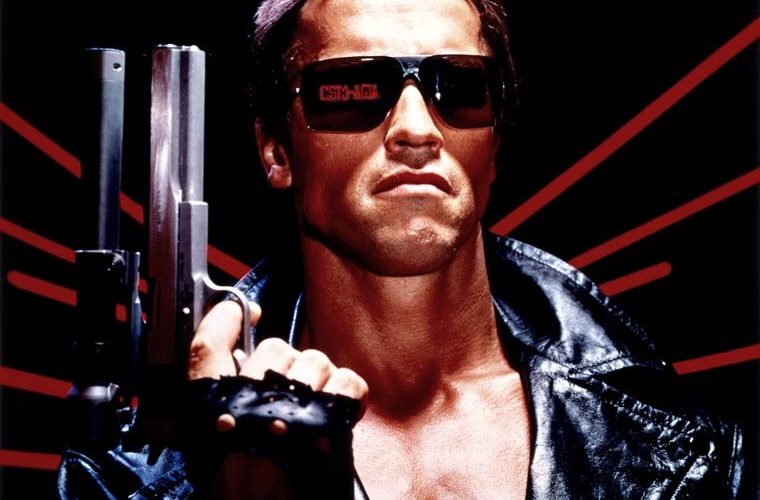The Terminator (1984) – A masterclass in filmmaking efficiency.
Later on this month, on August 29th (25th in the US), director James Cameron’s epic 1991 action/science fiction sequel Terminator 2: Judgment Day gets a one night theatrical re-release having been painstakingly remastered and post converted into 3D. It will be, for an entire generation, the first, and possibly only chance to watch this incredible, groundbreaking film in theatres. We will be giving our thoughts on Cameron’s re-release soon but for now let’s take a look back at the film that both started the Terminator saga and more importantly, gave James Cameron the explosive start to a career that has left an indelible mark upon modern cinema.
The fact that Cameron’s low budget 1984 breakthrough film, The Terminator is an undisputed classic of 80’s cinema and cinema in general is just that, undisputed. It is however, one of a handful of films that may be bettered by its sequel, Cameron’s 1991, big budget follow up, Terminator 2: Judgment Day. For this particular filmgoer, the second film had always been my favourite of the two (I try to ignore the rest of the films in the series), but on re-watching the original several times in recent years, I now have a renewed love of the film. It’s grittiness, sense of impending doom and overall dark tone, almost devoid of humour, is very refreshing in the sanitised, PG-13 age of Hollywood blockbusters that we now live in.

Arnold Schwarzenegger is unrelentingly menacing as the titular killer cyborg from the future. Picking Schwarzenegger’s breakout role is difficult. His first film, 1970’s Hercules in New York, was hardly a huge success and following bit-parts in films such as The Long Goodbye and smaller films such as 1976’s Stay Hungry, he came to a greater degree of public acclaim with the 1977 bodybuilding documentary Pumping Iron (although many would argue that the Austrian Oak’s acting chops were on show to a degree here rather than it being merely a documentary). It was his 1982 film Conan The Barbarian that thrust him more firmly into the consciousness of filmgoers but whist appreciation for that film has grown in the intervening years, it was hardly a smash hit upon release.
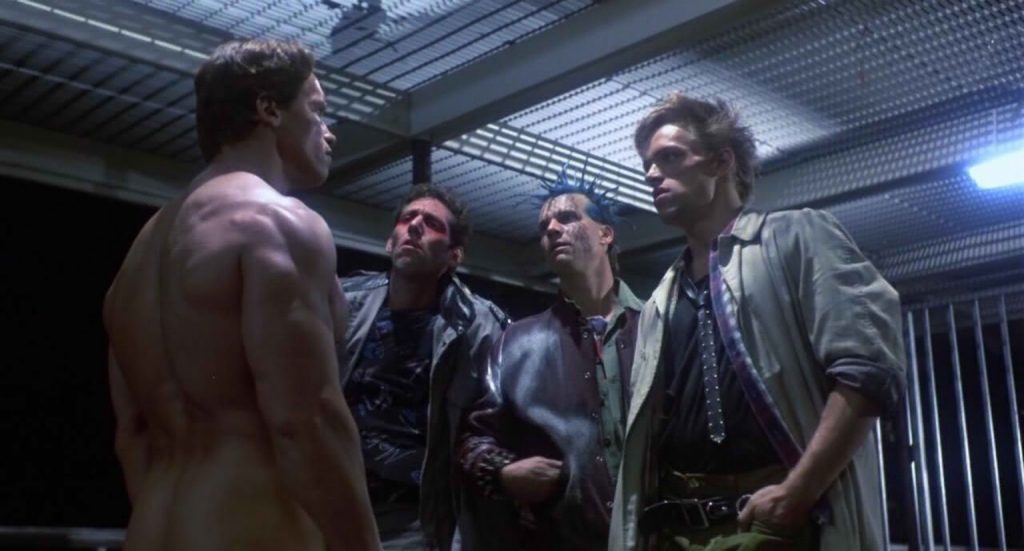
When a young James Cameron was unwell whilst in Rome, he had a fever dream in which he envisioned a metal skeleton walking out of a fiery inferno. It was this fortuitous dream that led him to writing a script, along with his producing partner and then wife, Gale Anne Hurd, which the now defunct Orion Pictures helped turned into the film we now have. Cameron’s eventual choices regarding casting and his hands-on approach to visual effects helped craft a final film that makes the absolute most of a meagre budget of only $6.4 million. Following a fairly eventful production, The Terminator was released on October 26th 1984 and was a resounding success making well over $80 million.
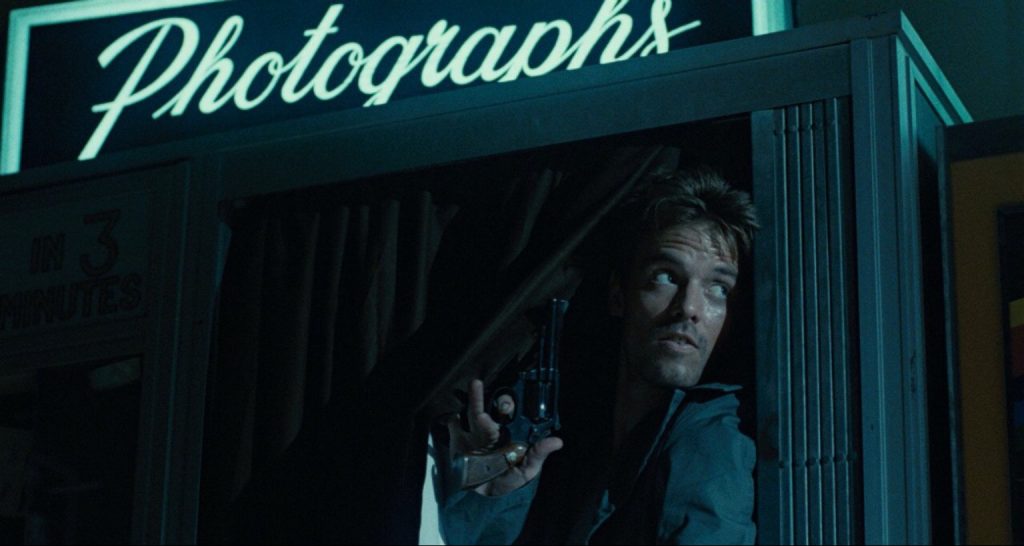
Watching The Terminator 33 years on, what really strikes me most is how stunningly well paced a film it is. With a lean run time of 107 minutes the film wastes no time yet always feels like it’s taking just enough time to provide the viewer with adequate exposition and setup of its characters. The Terminator is very much a product of the ’80s with its garish fashion and big hair so typical of that decade, but that is in no way a bad thing as it’s setting is very much an integral part of the plot and overall aesthetic of the film. T2 may be grander, more epic but, for a time in the late ’90s to early 2000s it seemed to suffer from too much exposure if there can be such a thing. It’s been on TV a million times and released more times on various home video formats than almost any other film I can think of and, for a time, had maybe been a little too much in the public lexicon to be viewed outside of itself and its own reputation. That said, I feel that the sequel has now fallen into classic status having passed it’s 25 birthday in 2016 and can now be viewed more far objectively. The original film was never given the sometimes damaging label of a blockbuster and has a much lower budget feel that gives it an almost indie quality that has done its reputation no such harm. Set over the course of two days and nights there is a greater sense of intimacy with the first film, and a dark tone that’s very film noir (or should that be Tech Noir?)

Schwarzenegger, in only his second major role, has only a handful of lines but commands the screen with a presence that sets him apart as one of cinema’s truly frightening villains. When you consider that both OJ Simpson and Lance Henriksen had been considered for the role prior to the Austrian Oak, it’s lucky that Cameron made such an inspired casting decision and it would be interesting to peer into an alternate universe and see what those other two actors would have brought to the role. In a wonderfully physical performance, Schwarzenegger conveys an unrelenting sense that he will carry out his murderous mission with pure, robotic efficiency and there’s absolutely no humanity to be seen behind those Gargoyle sunglasses. Linda Hamilton shines as Sarah Connor, the T-800’s timid, shell-shocked target and by the film’s end it’s great to see her transition into something that more closely resembles (mentally at least) T2’s ripped killing machine mom. Michael Biehn also gives a superb, understated performance as the battle-weary human soldier sent back to protect Sarah. The sense of impending doom he conveys whilst never straying from his mission adds immensely to the film’s pre-post-apocalyptic theme. The conviction and intensity of delivery of Reese’s lecture to Sarah about how the Terminator will not stop until she’s dead is a perfect combination of taught, efficient writing and damn good acting. It’s this overbearing sense of impending doom that’s so perfectly carried over into the sequel that makes the first two Terminator films so effective and grounded as science fiction thrillers. Nuclear armageddon is a threat that’s faced the world since the Cold War and one that’s always been there in the back of our minds and these films use this to great effect.
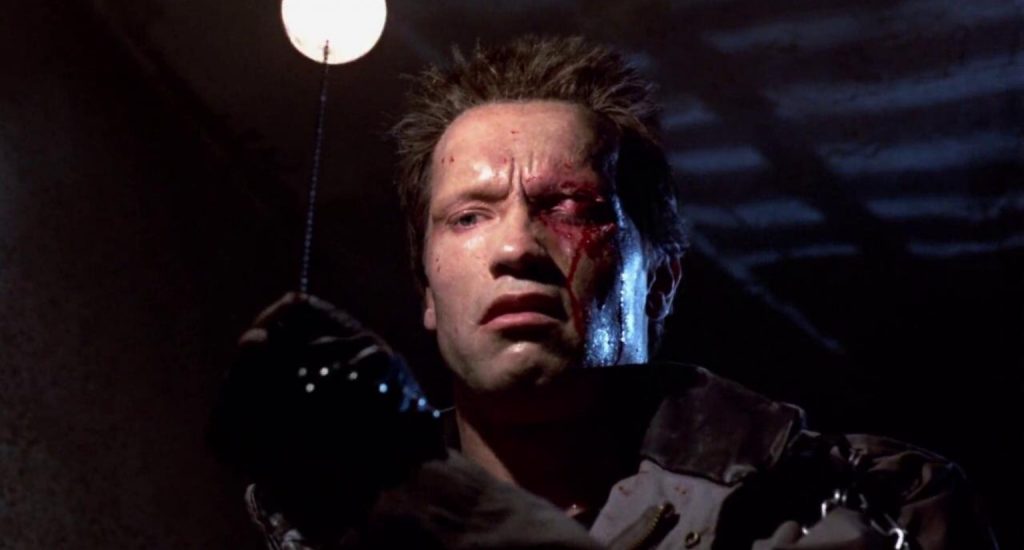
The Terminator has many great plot devices and technical flourishes that I could mention, such as the idea that Kyle is the father of the man that sent him back to the past in the first place, a mind bending temporal causality loop that gives food for thought and debate. On the technical front the cinematography, iconic score by Brad Fiedel, coupled with its ’80s soundtrack and tight editing are all first rate. One particular scene representative of these aspects so finely melded by Cameron’s deft hand is the scene where Sarah and the Terminator first meet. As the cyborg walks through the Tech Noir nightclub and approaches the table where Sarah sits waiting for the arrival of the LAPD, the film shifts into a dreamlike slow motion as Sarah knocks a bottle onto the floor, bends down to pick it up just long enough for the T-800 to miss her as he passes. The 80’s rock music is now muffled by the dilation of time as the score comes in, Sarah gets up and sees not the cyborg but Kyle Reese staring at her from across the bar, oblivious to the fact that her hunter has now doubled back and is about to see her. Just as the slo-mo tension reaches a climax Kyle sees what Sarah hasn’t as she lifts her gaze to the looming machine-man as he pulls out his gun, Kyle does the same and we kick back into real-time and all hell breaks loose. This level of tension is maintained for the film’s duration and marks it as one of cinema’s most efficient thrillers. But more than being a mere thriller or science fiction piece, what The Terminator does so well is seamlessly blend genres. With its themes of time travel and killer cyborgs it’s very much a science fiction film but added to that is a healthy dose of thriller and even of slasher horror trappings with the way that Schwarzenegger’s unstoppable robot apes the same unstoppable nature of Halloween’s Michael Myers.
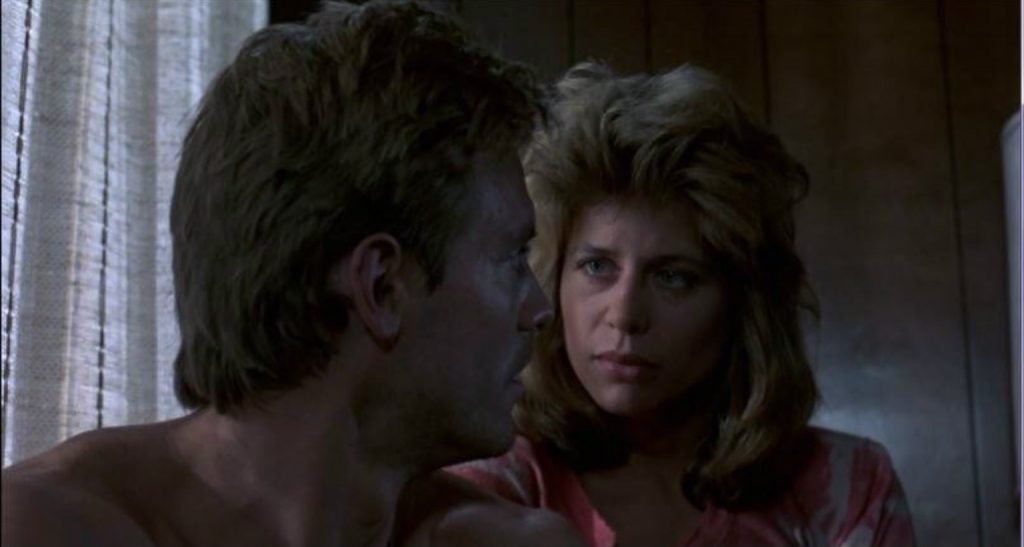
Whilst making any film is a collaborative affair, James Cameron, like many of the best in his field, is a perfectionist and only gives his stamp of approval to something if it meets his very exacting standards. What he brought to The Terminator was fresh expertise in the craft of special effects having worked in this field for Roger Corman, but more importantly a sense of determination and drive that aped that of the film’s titular character. Cameron had been so impressed with George Lucas’ Star Wars when he first saw it in 1977 that he was utterly convinced that filmmaking was the career path he would follow and followed that path with unstoppable determination.
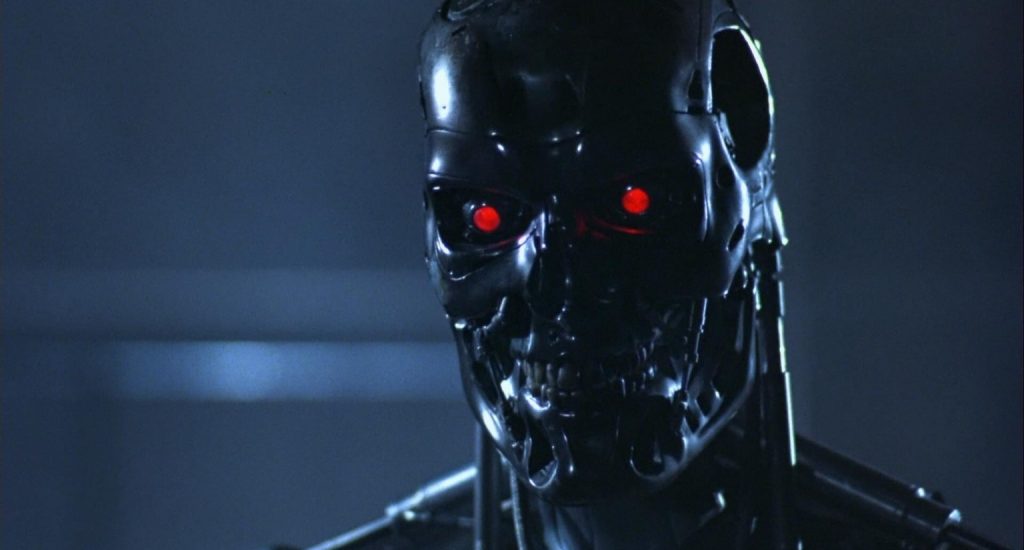
We’ve since seen what James Cameron can do with huge budgets and established effects houses and there’s no denying that he’s more than made his mark on the movie world. However, one can’t help but think that ever since he declared himself The King of the World™, his films have become somewhat bloated and indulgent in comparison to the taught, lean storytelling style he exhibited here. I still may lean ever so slightly towards T2 as the more personally fulfilling, entertainment spectacle of the two films but back in 1984, with very real limitations made worse by on-set woes, problems with studio heads and the lack of any prior established reputation, Cameron made best of what he had and that estimated $6.4 million budget was stretched further than anyone could have imagined. He ended up giving us a classic film of such quality that it made sure that the audience, like the Terminator himself, would indeed be back.
Film ’89 Verdict – 10/10

